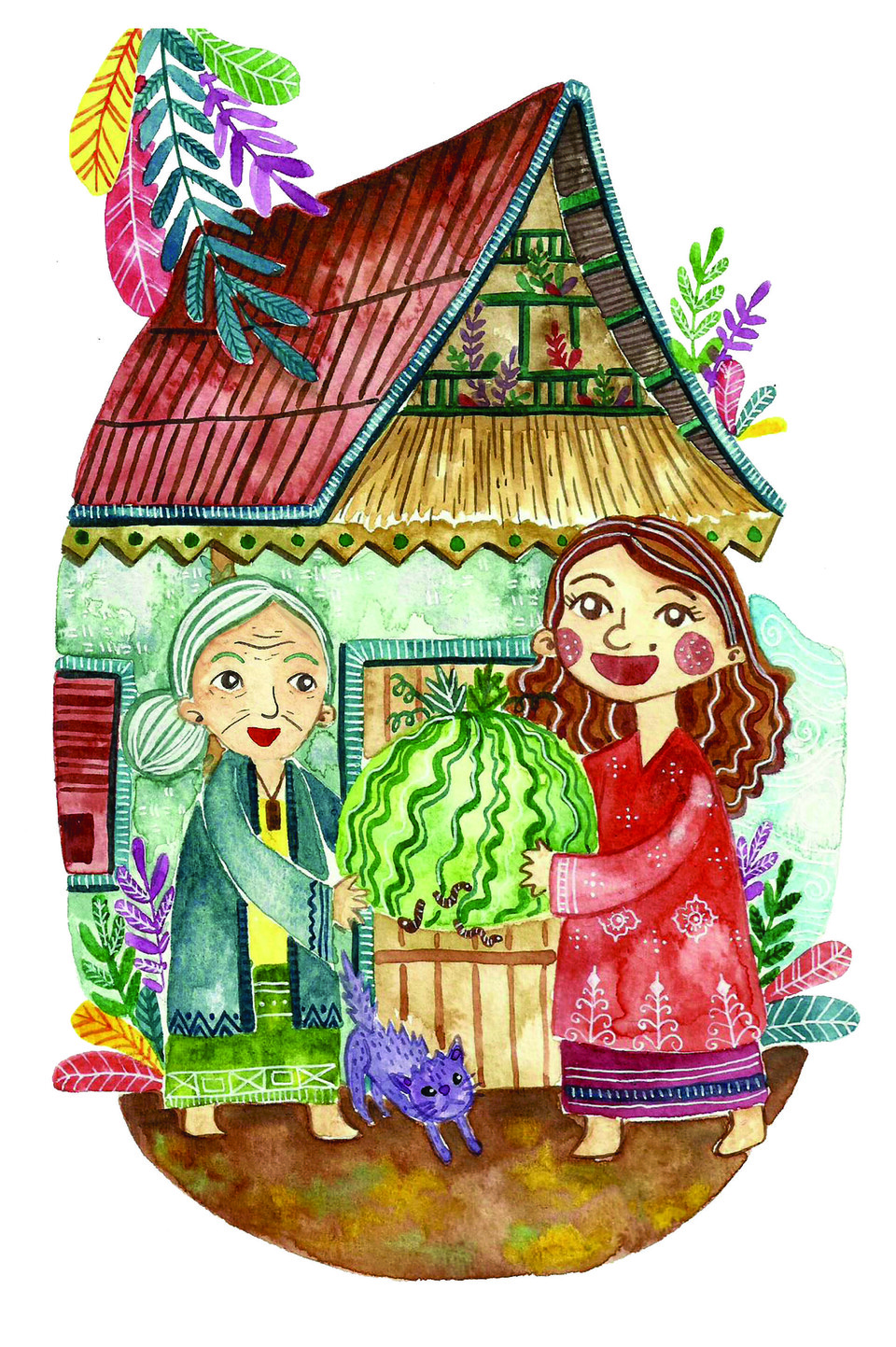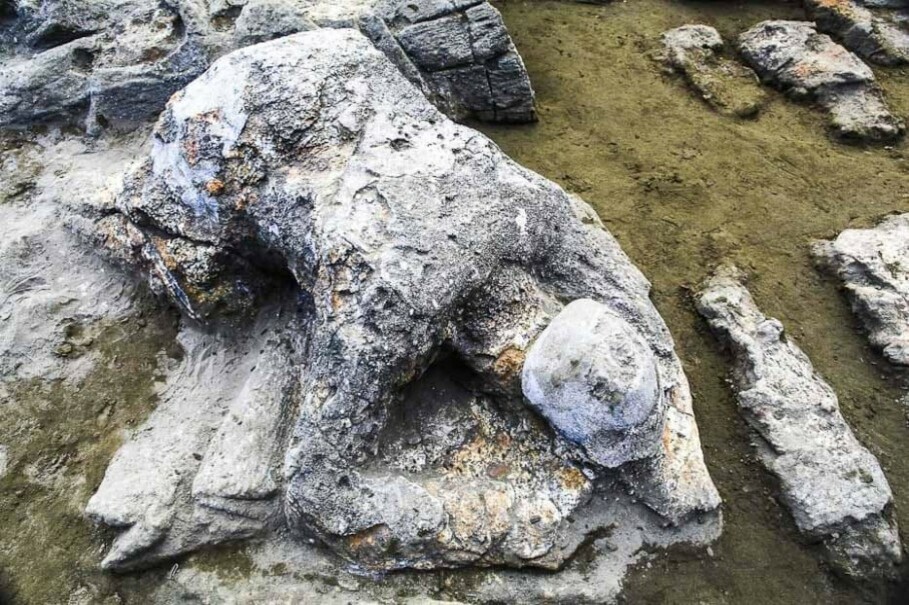Five Most Popular Indonesian Folk Tales (and Their Subtexts)

Jakarta. Indonesian children's bedtime stories used to be dominated by folktales. Remember the story of Bandung Bondowoso building one thousand temples in one night to win the hands of Roro Jonggarang (in Javanese mythology the origin story of Yogyakarta's Prambanan Temple)? Or Joko Tarub, our own Peeping Tom, stealing a shawl from an angel bathing in a lake so she would come back to him (Joko Tarub's descendants according to another myth founded Java's great Mataram kingdom in the 17th century)?
Now in the age of YouTube, Netflix, My Little Pony and We Bare Bears, folktales have lost their magic, leading some local publishers to publish folktale picture books that bowdlerize some of the stories's unsavory, non-child-friendly elements to attract readers.
According to University of Indonesia's children's story expert Riris K. Toha-Sarumpaet, in an article called "Batu Permata Milik Ayahanda: Dongeng Tradisional Indonesia" ("Father's Diamonds: Indonesian Traditional Folktales") published in Jurnal Perempuan in 2007, local folktales generally display one or more of these four main themes: obedience, men’s wrath and women’s loyalty, envy and sibling rivalry, trickery and childishness.
The unsavory part, Riris said, is that many of them tend to be sexist, brutal and celebrate female passivity.
Veteran book editor Bambang Trimansyah also said in an opinion piece in Kedaulatan Rakyat that some local folktale themes are not suitable for young readers, including sex, sadism and gender bias.
There have been few efforts to reimagine these problematic tales for the modern readers. In 2000, poet Toeti Heraty published a feminist reinterpretation of the Balinese tale "Calon Arang." The book of lyrical prose was titled "Calon Arang: Kisah Perempuan Korban Patriarki" ("Calon Arang: Tale of a Female Victim of Patriarchy").
Let’s noq take a look at five of the most popular Indonesian folktales. Finding a way to retell them should start with reading them.
1. Bawang Merah Bawang Putih
"Bawang Merah Bawang Putih" ("Shallot and Garlic") is a Cinderella-type story of good versus evil and very popular in Indonesia and Malaysia.
Bawang Merah and Bawang Putih are half-sisters who are polar opposites of each other. Bawang Merah is a lazy, greedy girl spoiled by their mother while Bawang Putih is obedient, diligent and does all the chores without complaint.
One laundry day in the river, Bawang Putih loses a scarf, which is picked up by an old woman. The old woman says she will return the scarf if Bawang Putih cooks and cleans for her. Bawang Putih does as she's told, gets the scarf back and the old woman as a gift tells her to bring home one of her two pumpkins, a small or a large one.
Bawang Putih chooses the smaller pumpkin. When she breaks open the pumpkin at home, she discovers the fruit is filled with jewelry.
Bawang Merah and their mother get jealous and want their own pumpkin filled with jewelery, so they go to the river and deliberately lose their scarves. Then they visit the old woman’s house and ask for a pumpkin. They bring home the big one (of course), but instead of jewelry, their large pumpkin is filled with snakes.
The story has been adapted many times into stage plays, movies and TV series.
In 2005, it was made into an Indonesian soap opera (sinetron) set in contemporary Indonesia. Bawang Merah and Bawang Putih became high-school teens. Revalina S. Temat played Alya (Bawang Putih), the daughter of a rich, harmonious family, and Nia Ramadhani played Siska (Bawang Merah) whose mother is a poor widow. There was an additional character named Ferdi, played by Dimaz Andrean, a boy trapped in a love triangle with Alya and Siska.
The series bagged the "Most Favorite Sinetron" award at the 2005 Panasonic Gobel Awards. It was then screened on Malaysia’s TV3 in 2006-2007.
2. Malin Kundang
The original "Malin Kundang" story is set at a specific location, the Air Manis Beach in Padang, West Sumatra. Malin Kundang tells the story of an ungrateful son who is cursed into stone by his mother.
If you visit the beach, you can see a stone believed to be the cursed Malin Kundang because it is shaped like a person face-down on his knees begging for forgiveness.
Another folktale from West Kalimantan called "Batu Menangis" ("The Crying Stone") has a story very similar to Malin Kundang, but no "crying stone" has ever been discovered in the area.
There are some differences between the two stories. Malin Kundang, in the beginning of the story, is a hard-working, obedient young man. He sails the world to get more money to support his mother. After many years, Malin comes back a rich man. New, vain Malin now refuses to be associated with his poor mother. That's when the mother prays for him to be transformed into stone.
Meanwhile, Batu Menangis's main character is a spoiled girl who never lifts a finger to help her mother. Instead, she keeps saying to people that the mother is actually her maid. Mother finally has enough and prays to God that the girl is turned into stone.
3. Timun Mas
A traditional story from Central Java, "Timun Mas" ("Golden Cucumber") features a brave young girl who escapes the clutches of a giant called Buto Ijo ("The Green Giant").
It starts with a childless old widow living by herself. She visits Buto Ijo, a powerful giant, asking to be blessed with a child. Buto Ijo gives her a large cucumber and asks her to promise to give her first child to him to devour.
When the widow gets home, she finds a baby girl inside the cucumber. She names her Timun Mas and forgets about her promise.
One day, when Timun Mas is already a teenager, Buto Ijo drops by the old woman’s house asking her to fulfill her promise. The woman tells Timun Mas to run away, packing her a supply of magic cucumber seeds, needles and salt.
Buto Ijo chases Timun Mas but she always manages to escape by deploying her mother's magic tricks. Buto Ijo is finally defeated when Timun Mas sprinkles salt around him that turns into an ocean and swallows him whole.
Publisher Erlangga for Kids (EFK) published a Disneyfied version of the story in 2016. In it, Buto Ijo is a lonely giant who desperately wants Timun Mas to be his friend. Timun Mas tells him to smile so he doesn’t look so terrifying. The story ends happily with a smiling Buto Ijo hanging out with his new friends.
EFK editor Windrati Hapsari told the Jakarta Globe the story was deliberately edited to carry a positive message of friendship and make it less scary for children.
4. Sangkuriang
The name Tangkuban Parahu, a volcano in Lembang, West Java, means "upturned boat" in the local Sundanese dialect. The name is taken from a local legend that bears similarities to the classical Greek tragedy "Oedipus Rex."
The story's heroine is an exiled princess called Dayang Sumbi who likes weaving to pass her time. One day, her weaving needle goes missing and she's too lazy to find it. Instead she makes a wish that she will marry whoever finds the needle for her.
A dog called Tumang finds the needle and brings it back to Dayang Sumbi. The dog turns out to be a god cursed to live as a dog. Dayang Sumbi and Tumang marry, and soon their son Sangkuriang is born.
Sangkuriang grows up to be a skillful hunter. He hunts with Tumang, but does not know that the dog is actually his father. One day, when he could not find any prey Sangkuriang kills Tumang and brings his liver home.
When Dayang Sumbi finds out her own son has killed her husband, she hits Sangkuriang in the head, leaving a large scar, and banishes him.
Years later, Sangkuriang returns home and falls in love with his own mother – who has been given the gift of eternal youth by the gods. Dayang Sumbi at first was attracted by the young man, now a famous warrior, but she then sees the scar on Sangkuriang’s head and realizes he’s her own son.
To stop Sangkuriang from marrying her, Dayang Sumbi orders him to make her a lake and a big boat to sail on before dawn arrives. Sangkuriang summons the spirits of his ancestors to help him finish the tasks.
Worried that Sangkuriang might actually make his deadline, Dayang Sumbi prays for dawn to come early and uses her magic shawl to create sunlight. In desperation, and thinking that he has failed his tasks, Sangkuring kicks his half-built boat upside down and the upturned boat turns into a mountain.
5. Si Kancil
In Indonesia and Malaysia, tales of a trickster called "Si Kancil" ("The Mousedeer") are widely popular. In the stories, Kancil always outsmarts farmers and bigger animals.
In "Kancil and the Crocodile," Kancil wants to cross a river to reach a cucumber garden. The river is full of crocodiles who want to eat him. In one version of the story, Kancil tells the crocodiles to line up because he wants to give them meat and he jumps on the crocodiles's backs to reach the cucumber garden.
Another version says Kancil tricks the crocodiles to line up by announcing that the king of the jungle is hosting a festival and Kancil has been tasked to count number of crocodiles in the river.
The mousedeer stories have been turned into books and wayang (shadow puppet) performances. According to history journal Historia, the oldest written version of the Kancil stories is "Serat Kancil Amongsastra" by Kyai Rangga Amongsastra, a court writer for the Solo Sunan Pakubuwono V. The song-poem was written in 1822 but not published until 1878.
Other Kancil books include "Serat Kancil van Dorp" published by Dutch writer G. C. T. van Dorp in Semarang, Central Java, in 1871. There are also the "Serat Kancil Salokadarma" and "Serat Kancil Amongraja," written for Yogyakarta’s Pakualaman court.
According to historian Philip Frick McKean, the kancil symbolizes the ideal Javanese or Malay man, who solves problems in a calm, level-headed way to avoid open conflict.
Tags: Keywords:POPULAR READS
Rupiah Declines Against Dollar Amid Geopolitical Unrest
The Indonesian rupiah depreciated against the US dollar in Tuesday's trading session, driven by escalating tensions between Iran and IsraelNasdem Vows to Honor the Constitutional Court Ruling on 2024 Presidential Election Dispute
Nasdem's Willy Aditya commits to respect the Constitutional Court's ruling on the 2024 presidential election dispute.Jokowi Calls for Internal Meeting to Prepare for Economic Fallout from Iran-Israel Conflict
Minister Airlangga Hartarto announced President Jokowi's plan to hold an internal meeting on Tuesday to address the Iran-Israel conflict.Coach Shin Tae-yong Voices Outrage Over Referee Decisions After Indonesia's Defeat to Qatar
Indonesia's AFC U-23 defeat to Qatar leaves Garuda squad with 9 players, bottom of Group A.Knife Attack Against Bishop, Priest in Sydney Treated as Terrorism, Police Say
Police arrested a 16-year-old boy Tuesday after the stabbing at Christ the Good Shepherd Church.Popular Tag
Most Popular


























